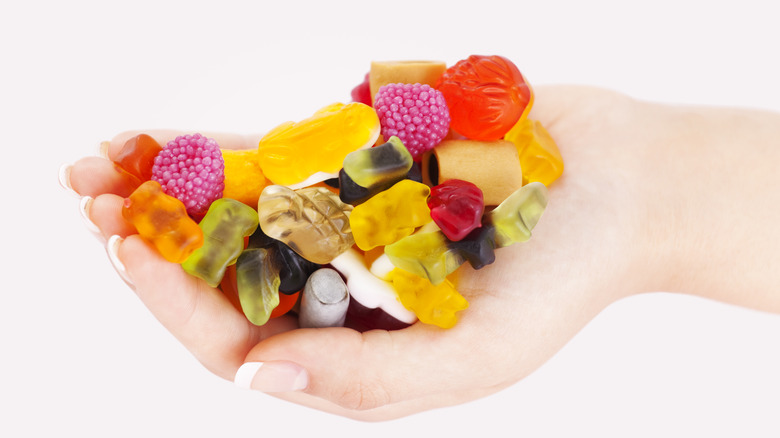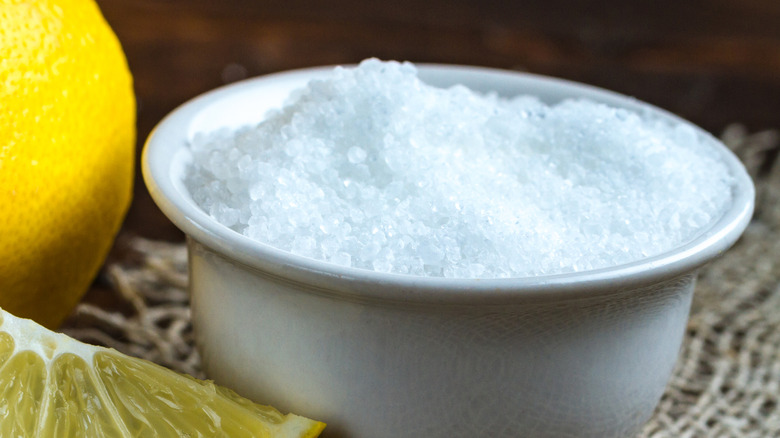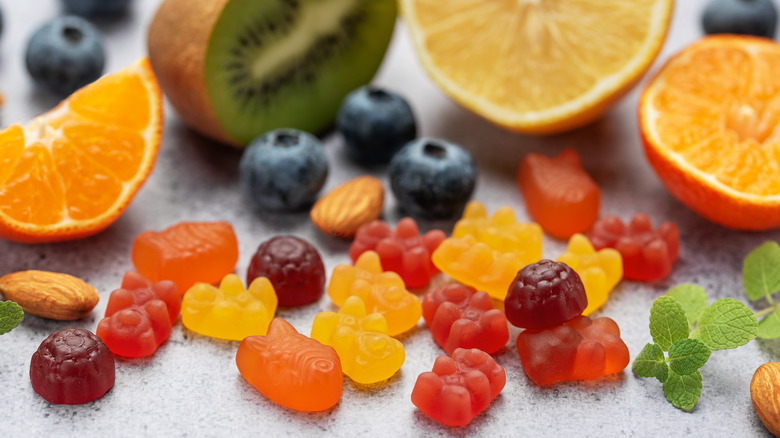The Expert-Approved Tips For Flavoring Homemade Soft Candy
While sweets like peach rings or the unique flavor of Sweedish Fish are certainly tasty, the satisfaction of crafting your own homemade candies is unparalleled. Whether you're mastering a traditional saltwater taffy or making a homemade honeycomb candy recipe that will rival Cadbury's Crunchie chocolate bars, the process is a testament to your culinary skills. When you're making your own sweets, there are a few things you need to be aware of, such as grabbing the right tools for homemade candy and getting your flavoring right.
When it comes to the art of candy making, who better to turn to for advice than Mika Shino, the founder and CEO of Issei Mochi Gummies? In an exclusive interview with Daily Meal, Shino shared her thoughts on flavoring your homemade sweets. Emphasizing the notable flavoring options available on the market, Shino explained, "There are exceptional flavor companies producing incredible global flavors."
You can find everything from standard candy flavors like tutti frutti to more obscure things, such as absinthe or cedro fruit. This means you have the opportunity to add unique touches to your homemade candies and give them your own personal spin. She further advises that once you've selected your flavor, you can experiment with additional ingredients to truly help the flavor pop.
Don't skip the flavor enhancers
When you add flavoring to homemade candy, you might think adding your favorite extract is enough to give the candy a bright taste. However, Mika Shino explains that you can enhance this flavoring even more with one addition: "The best way to make a flavor pop more is to add citrus or citric acid — the acid brings out the flavor, making it stronger."
Citric acid is a compound that occurs naturally in fruits and veggies and is a key ingredient in enhancing the flavor of your candies. Commercial versions of citric acid are typically a powder extracted from a specific type of mold. The reason why citric acid is a great addition to your candies is that it acts as a flavor enhancer, particularly boosting fruity flavors, which are often added to soft candies like gummy bears. The result is that you get a more flavorful treat without increasing the quantities of your flavoring, which could negatively affect your final sweet.
Steer clear of a few flavoring caveats
Now that you've delved into the art of candy making and know what flavors to add to your sweet treats, you should also be mindful of how to mix them into your candies. Timing, in particular, is a key factor. Mika Shino advises, "Flavors should be added last, as many contain alcohol and may evaporate with the heat when cooked."
This is because alcohol has a lower boiling point than water, which can cause it to evaporate. Although some of the alcohol will still stick around, adding flavor to your candies, the treats won't have the same robust taste. This detail-oriented approach to flavoring ensures your candies are strong with the intended flavors. If you're making gummies, just a couple drops of candy flavoring for every 1¾ ounces of sugar should do the trick. With these tips, you're on the fast track to creating tasty, flavorful sweets!


